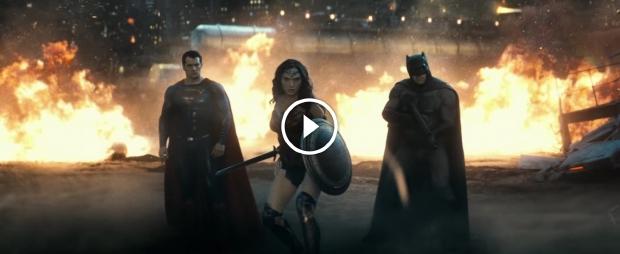Sony's new sulfur-based batteries last 40% longer, are 30% smaller
Sony is working on a new battery technology that will see batteries lasting 40% longer on a single charge, and they'll also be up to 30% smaller than current batteries found inside of our devices.
Japanese newspaper Nikkei is behind the latest report, reporting that Sony is creating a power cell made from a sulfur compound, instead of lithium, used in today's batteries. The first commercial Li-on battery was created by Sony, so if the Japanese electronics giant does get its new sulfur-based battery to the market, it would make another first for Sony. But there are problems with sulfur-based batteries, as their capacity decreases with every charge cycle, because of the electrode dissolving into the electrolyte. Nikkei reports that Sony has found a way around these problems by reforming the electrolyte solution to make longer-lasting batteries, hold even more power.
Sony is reportedly verifying the safety of this new battery technology before it kicks off mass production. The company is going to be making sure the new sulfur-based batteries won't explode, or make your new smartphone worthless after a few charges. We shouldn't see Sony's new battery technology inside of devices until 2020.
Continue reading: Sony's new sulfur-based batteries last 40% longer, are 30% smaller (full post)
Ken Levine teases more from his upcoming 'small scale open world game'
Ken Levine, the Game Designer behind iconic games like System Shock 2 and BioShock, we have a new small scale open world game, but there's not much we do know about it.
Levine spoke on the OnPoint podcast (if you want to listen to it, it's from 21:20) where he explained: "We started this experiment once we finished Bioshock Infinite. How do you make a narrative game, you know, kind of feel like the games we've made before, but make it replayable and make it extend and make it react to the players? Make it replayable by giving players different ways to approach the problems and letting them really dictate the experience. That is not a simple problem to solve".
"It can mean an open world game, and the thing we're working on is sort of a small scale open world game. The reason ours is an open world game is because if you want to give players the agency to drive the experience, that really fights against the linear nature of the games we've made before, like Bioshock and Bioshock Infinite," added Levine.
Continue reading: Ken Levine teases more from his upcoming 'small scale open world game' (full post)
New solar farms could see solar balloons floating above the clouds
Solar power is a great alternative to countless other energies, but cloud can get in the way sometimes - and it's unavoidable, until now.
An international consortium is working on taking solar farms to the skies, above the clouds using stratospheric balloons. These balloons would be much closer to the sun, taking in as much power as possible into its solar cells - without much interference and space used on the ground. Under the direction of French-Japanese scientific research lab, NEXTPV, the main tenet of their concept is that there aren't many clouds floating at an altitude of 3.7 miles (6km). But higher, at 12.4 miles (or 20km) there are not many clouds at all.
Taking away cloud coverage and light diffusions that "occurs in the many close layers of the Earth's atmosphere leads to a higher concentration of sunlight. In turn, this concentrated solar power leads to higher energy yields from photovoltaic solar cells", reports Yahoo. How would these massive solar farms float above the clouds? They would use the excess electricity generated during the day to recombine hydrogen and oxygen in a fuel cell. This fuel cell would then release power regularly, as required, overnight. The same source of hydrogen isolated through water electrolysis for the fuel cell would keep the entire solar farm balloon in the air.
Continue reading: New solar farms could see solar balloons floating above the clouds (full post)
A new PS3 emulator called RPCS3 shown running under DirectX 12
News of the Nintendo Wii U emulator running Mario Kart 8 broke last week with fans excited to see the future of Wii U emulation on the PC. But now there's a tease of a PlayStation 3 emulator, running under DirectX 12.
YouTuber 'John GodGames' has teased the DX12 version of RPVS3 - his PS3 emulator - running After Burner: Climax, Dragon Ball Z Burst Limit and Silent Hill 3. Dragon Ball Z Burst Limit has some broken visuals and noticeable artifacts, but it runs. Now all we need to see running on this is Metal Gear Solid or Uncharted, and the real fun begins - which will most likely result in big lawsuits from companies if this ever goes mainstream.
Continue reading: A new PS3 emulator called RPCS3 shown running under DirectX 12 (full post)
LG grabs Hollywood director for OLED commercial during the Super Bowl
LG is getting serious about its OLED TV advertisement, securing Hollywood director Ridley Scott - you know, the guy who directed Blade Runner and most recently, The Martin - to direct a new ad during next year's Super Bowl. We definitely understand why, as we fell in love with - and I'm still deeply in love with LG's 65-inch 4K curved OLED TV.
Scott will be in charge of directing LG's OLED spot, which will debut on February 7 during the Super Bowl 50 broadcast. The commercial will "showcase LG's widely acclaimed OLED TV technology and introduce a soon-to-be-announced addition to its OLED TV line" according to LG, and will be produced by Scott's RSA Films company, and helped by Scott's son, Jake.
Scott is also no stranger to Super Bowl notoriety, as he directed the infamous 1984 commercial for Apple and its Macintosh at the time, which is recognized as the best Super Bowl ad of all time.
Continue reading: LG grabs Hollywood director for OLED commercial during the Super Bowl (full post)
Batman v Superman: Dawn of Justice might receive a 70mm release
With all of the movie hoopla going on right now surrounding the release of Star Wars: The Force Awakens, Quentin Tarantino's The Hateful Eight is getting some good press, and it's spreading across the US with special 70mm screenings of the film - including a longer cut of the movie, with an intermission.
Well, THR is now reporting that Batman v Superman: Dawn of Justice might get a 70mm release, thanks to the increased availability of 70mm-ready screens - courtesy of The Weinstein Company getting cinemas to prep their screens for The Hateful Eight. Zack Snyder directed part of Batman v Superman in 65mm IMAX, which as Slashfilm reports "makes a 70mm projector the best possible way to see the movie on the big screen".
It's obviously more expensive to show 70mm, but Batman v Superman would be something that's worth it. With Warner Bros. reportedly spending up to $410 million on the movie, making it the most expensive movie ever made, I don't know why they wouldn't go the extra mile (or extra 70mm at least) and show off Batman v Superman: Dawn of Justice in 70mm.
Continue reading: Batman v Superman: Dawn of Justice might receive a 70mm release (full post)
Valve, HTC have made a 'very big technological breakthrough' with Vive
We now know why HTC delayed the Vive until April 2016, the team has been improving things behind the scenes, and today at the Vive Unbound developers forum in Beijing, China, HTC CEO Cher Wang said that two weeks ago, Valve and HTC made "a very, very big technological breakthrough" with the Vive.
This breakthrough led HTC to skip the original Vive headset, and ship the new one - missing the Q1 2016 window. Wang said: "We shouldn't make our users swap their systems later just so we could meet the December shipping date". Wang didn't talk much about the technological breakthrough but did tease that it would be unveiled at CES early next month.
Continue reading: Valve, HTC have made a 'very big technological breakthrough' with Vive (full post)
MSI C236A, C236M boards support Xeon, designed for Quadro, FirePro
MSI has launched its C236A and C236M motherboards, intended for workstation, entry server, and datacenter use. In other words: they're high-end.
Both boards support Intel's Xeon E3 v5 series CPUs and are aimed squarely at multi-GPU users, specifically Quadro and FirePro. You can see this reflected partly in the spatial design of the boards, which look to nicely accommodate multiple GPUs, as well as the Steel Armor reinforced PCI-e slots which are said to handle even the heaviest cards just fine.
Other features include DDR4 Boost, support for Turbo M.2, Turbo U.2 and SATA Express storage, USB 3.1 Gen2 Type-C connectors, Military Class 4 components, Audio Boost, Intel Gigabit LAN, and Click BIOS 5.
Continue reading: MSI C236A, C236M boards support Xeon, designed for Quadro, FirePro (full post)
ASUS E3 Pro Gaming V5 motherboard built for Intel Xeon E3-1200 v5 CPUs
ASUS's latest motherboard is the E3 Pro Gaming V5. Designed with the LGA1151 socket and C232 Express chipset, it's the first ASUS motherboard compatible with Intel Xeon E3-1200 v5 processors, though it supports 6th-generation Intel Core, Pentium, and Celeron processors as well.
The V5 supports DDR4 (4x DIMMs, up to 64GB DDR4 2133MHz) and quad-GPU setups, and features USB 3.1 Gen 2 Type-A and reversible USB 3.1 Gen 2 Type-C (14 ports with data transfer speeds of up to 10Gbit/s) as well an M.2 connection for your SSD. Speaking of storage, up to six SATA drives at 6Gbps are supported.
For cooling, it packs a dedicated water pump header. On the audio front, you get SupremeFX for high-quality audio and a 115dB signal-to-noise ratio. Meanwhile, Intel Gigabit Ethernet technology is said to offer "exceptionally high" TCP and UDP throughput, allowing the CPU to do work harder for the game outside of networking tasks.
Continue reading: ASUS E3 Pro Gaming V5 motherboard built for Intel Xeon E3-1200 v5 CPUs (full post)
Driverless cars too lawful, crash rate double that of regular cars
Programmers and engineers at Google and the GM-Carnegie Mellon Autonomous Driving Collaborative Research Lab, among other institutions, are finding driverless cars are too good at what they do, and it's causing a crash rate double that of cars with human drivers. That is to say, a robot driver that obeys the law to the letter every time doesn't mesh so well with human drivers that don't do the same. For example, a driverless car will go the speed limit on a busy highway whereas everyone else will be going well above it, or be wanting to, thus increasing the probability of a crash. As well, the reflexes of a driverless car are better, which can catch a human off guard.
Though all crashes have been minor and none of them the fault of a driverless car, researchers are of course debating what to do about the situation. One possibility: programming the vehicles to behave more like humans and better fit into the "social game" (as Google describes it) that is driving, even if that means making them a little less lawful.
"It's a sticky area," says Brandon Schoettle, co-author of the University of Michigan's Transportation Research Institute's study. "If you program them to not follow the law, how much do you let them break the law?"
Continue reading: Driverless cars too lawful, crash rate double that of regular cars (full post)


